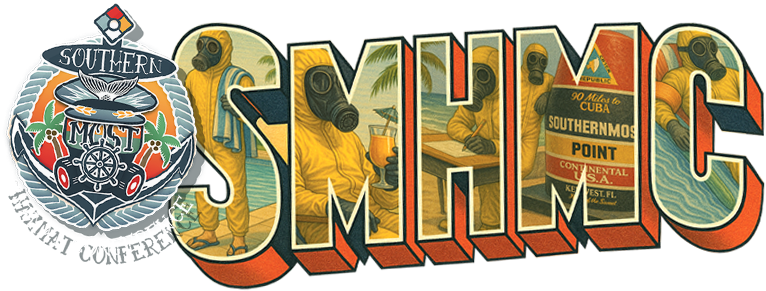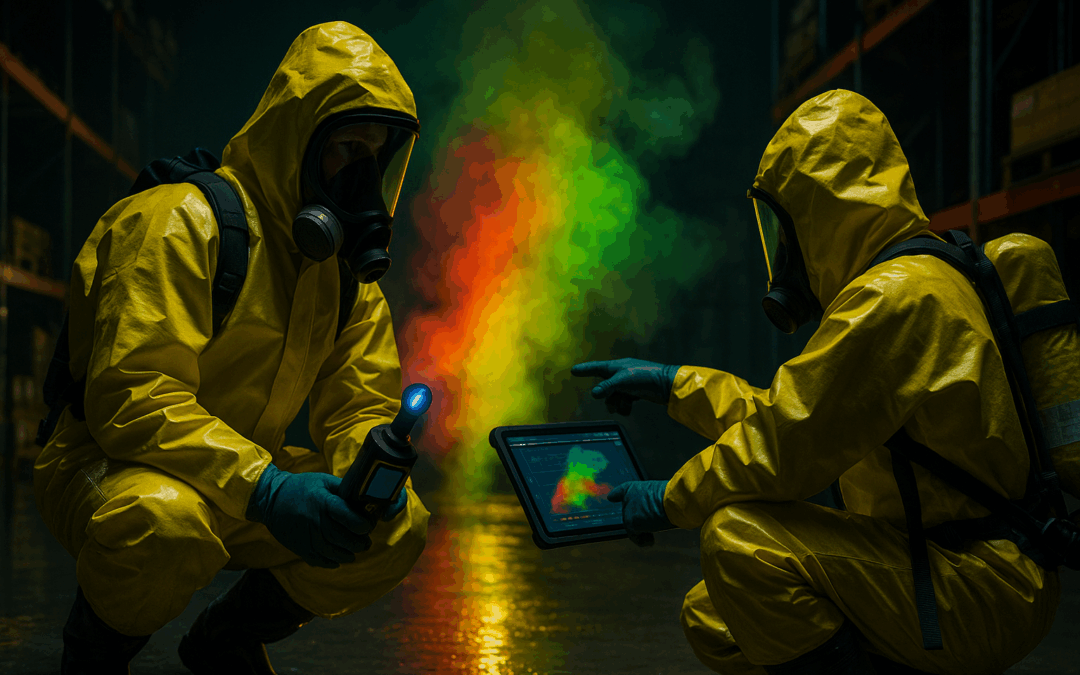Connecting the Dots in HAZMAT Training: Why Metering, PPE, and AEGLs Must Work Together
As someone who’s been sitting in on these conversations between Bobby Salvesen and Mike Monaco for years, I can tell you: what makes The HAZMAT Guys podcast different is how real it is. It’s not theory from a textbook or a PowerPoint class with no context. It’s two seasoned hazmat professionals hashing out what works in the field, what doesn’t, and what should be happening in the training room.
In episode 388, we got into a pretty candid discussion about exposures: what they are, how we detect them, and most importantly, how we respond. This isn’t just about gas monitors and chemical suits, it’s about understanding risk, making better decisions, and improving how we train the next generation of hazmat responders.
Meters: More Than Just Numbers
Mike had just come back from teaching a metering class in Massachusetts, and he was fired up. Not because the class went poorly, but because it finally clicked for people.
He pointed out how most hazmat techs are trained to use meters like a checklist item. They know how to turn it on and get a reading, but they don’t always understand where it fits into the full scope of the operation.
Take the PID (Photoionization Detector) as an example. It’s great for finding ammonia sources, but not for confirming what you’re dealing with. That’s where a secondary meter comes in. Once confirmation is done, the PID can take over again, giving readings up to 10,000 ppm, which is, to quote Mike, “one breath and you’re dead” territory.
This kind of thinking, understanding when and why to use each meter, is what hazmat training often skips over. Mike’s point was simple: we need to move from checking boxes to thinking critically.
PPE and Toxicology: Teaching Them Together Just Makes Sense
While Mike was talking metering, Bobby was teaching an applied chemistry class out in California, what they call “B-Week.” And this is where the conversation took a turn into something every hazmat trainer and curriculum designer should hear.
Bobby threw out a key frustration: they’re teaching metering before teaching PPE. And while you can get by with that order, it creates confusion. Students ask, “Should I wear bunker gear for this?” and they’re told, “We’ll get to that next week.”
Here’s the problem: those decisions happen in real-time in the field, and they’re deeply connected to the numbers your meters give you. Toxicology isn’t just academic, it’s the why behind every PPE choice.
Mike agreed, and even admitted that when the system doesn’t make sense, he just teaches the information anyway. “If that gets me in trouble, I don’t know what to tell you,” he said. That’s not rebellion, it’s realism.
AEGLs: The Most Misunderstood Tool in Public Safety
Eventually, we moved into discussing Acute Exposure Guideline Levels (AEGLs), and if you’re not familiar, this is a topic that should be in every hazmat responder’s toolbox.
AEGLs are exposure limits set by the National Research Council. They’re not laws, but they’re strong guidance for when you’re making decisions about public safety during a chemical release.
There are three levels:
- AEGL-1: Mild irritation (think watery eyes, coughing) but effects are temporary and reversible.
- AEGL-2: Serious, possibly permanent health effects, or a person’s ability to escape is impaired.
- AEGL-3: Death or life-threatening health effects. If people are in this zone, they need to be evacuated now.
Where AEGLs really shine is when you combine them with plume modeling tools like ALOHA. You can see exactly who’s at risk, how long they can safely stay, and what actions you need to take, whether it’s evacuation or shelter-in-place.
It’s not just about parts per million. AEGLs incorporate time and dose—because 10 ppm for 5 minutes might be survivable, but 10 ppm for 2 hours could be deadly.
Putting It All Together: Better Training, Smarter Responses
What came through loud and clear in this episode was that hazmat training needs an overhaul. Bobby made a passionate plea: stop throwing modules in a bag and hoping it makes sense. There’s a right order to teaching this stuff, and it should be designed with operations in mind.
Chemical properties should lead into metering. Metering should tie into toxicology. Toxicology should inform PPE selection. And all of that should wrap around real-world scenarios, not isolated PowerPoint slides.
The problem, as they both acknowledged, is that a lot of curriculums are built around time blocks, not learning logic. But we can do better. Instructors who know the field, who’ve lived it, need to have a voice in how these programs are built.
Real-World Application: When It’s Time to Act
One of the most practical takeaways from this episode is how to use AEGLs in a real-world scenario.
Let’s say you have a chemical release in a warehouse, and you’ve got 150 people inside. You estimate it’ll take an hour to evacuate everyone. You run your plume model, and it shows an AEGL-2 exposure for that duration. That means people might suffer serious health effects, but might still make it out.
But if the model shows AEGL-3 exposure in 40 minutes? That changes the game. You’re now risking fatalities if you don’t act faster. You might need to shelter in place, seal the building, or find another way to reduce the exposure.
This is where the theory meets practice, and where training that connects the dots could save lives.
Final Thoughts: Smarter Hazmat Starts With Smarter Training
If there’s one thing I took away from this conversation with Mike and Bobby, it’s that hazmat response is as much about thinking as it is about tools. You can have all the meters, suits, and software in the world, but if your team doesn’t understand how it all works together, you’re setting them up to fail.
We need training that teaches responders to think holistically—from chemistry and toxicology to metering and PPE. We need instructors who are empowered to teach the material in the way that makes operational sense. And we need to give our teams the confidence to make fast, informed decisions under pressure.
Hazmat isn’t just about containment. It’s about comprehension.



Great to see the push on this topic. As a safety professional and instrument specialist, I’ve been teaching this for over forty years, wondering when the fire service/hazmat folks would come to this realization. Also it not just about fire fighter safety, what about the community. Whether you use AEGLs or PEL/IDLH, the connection needs to be made.